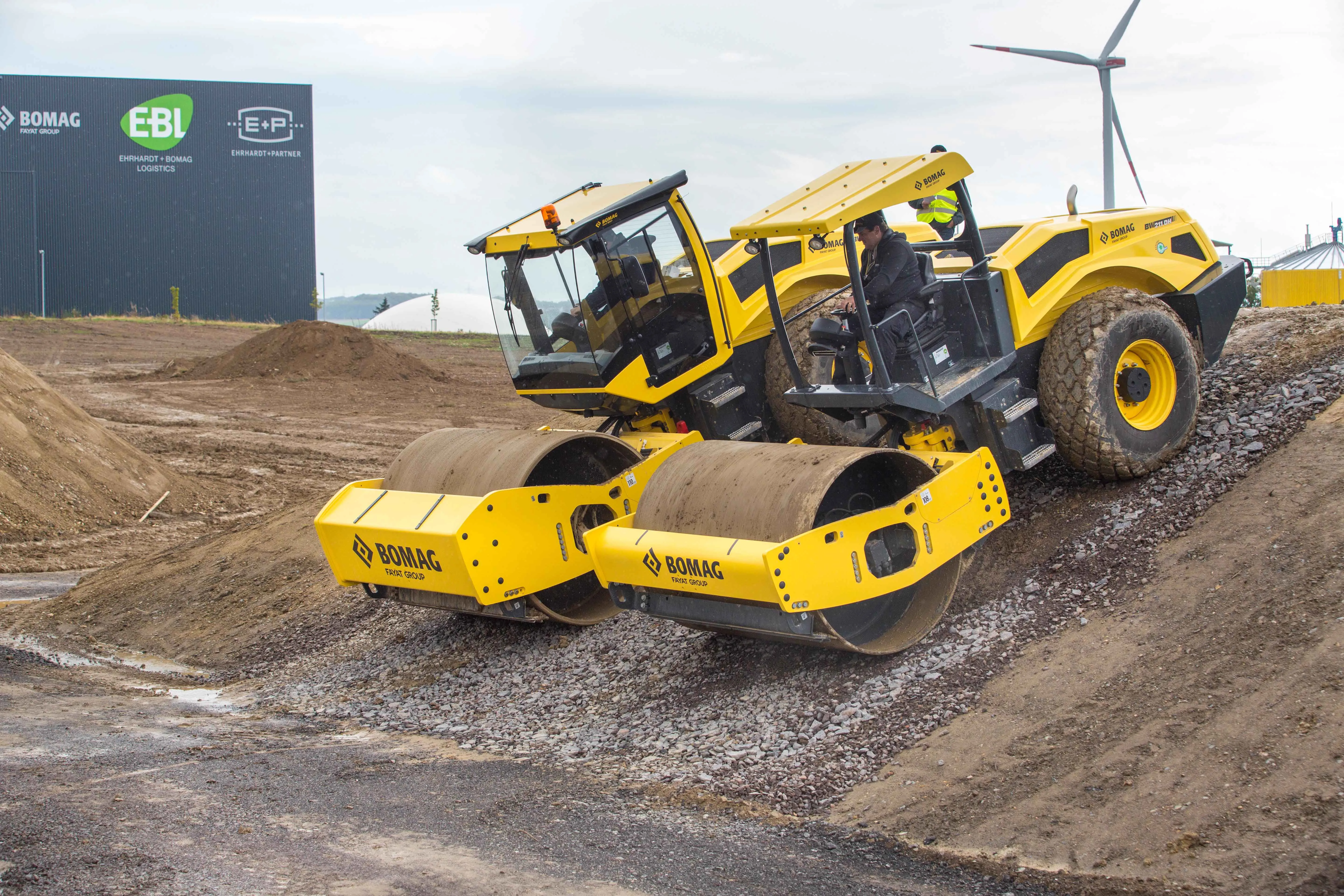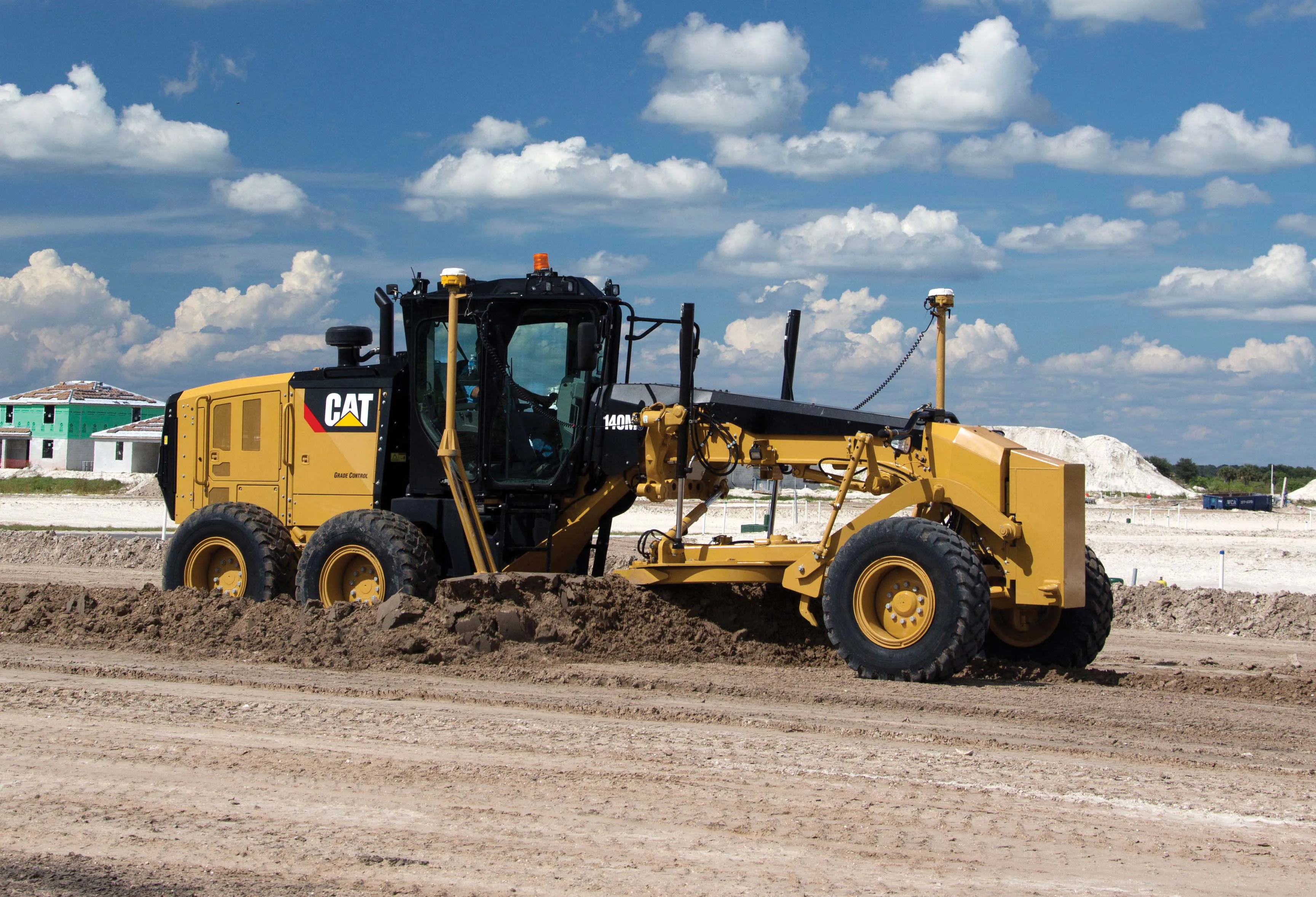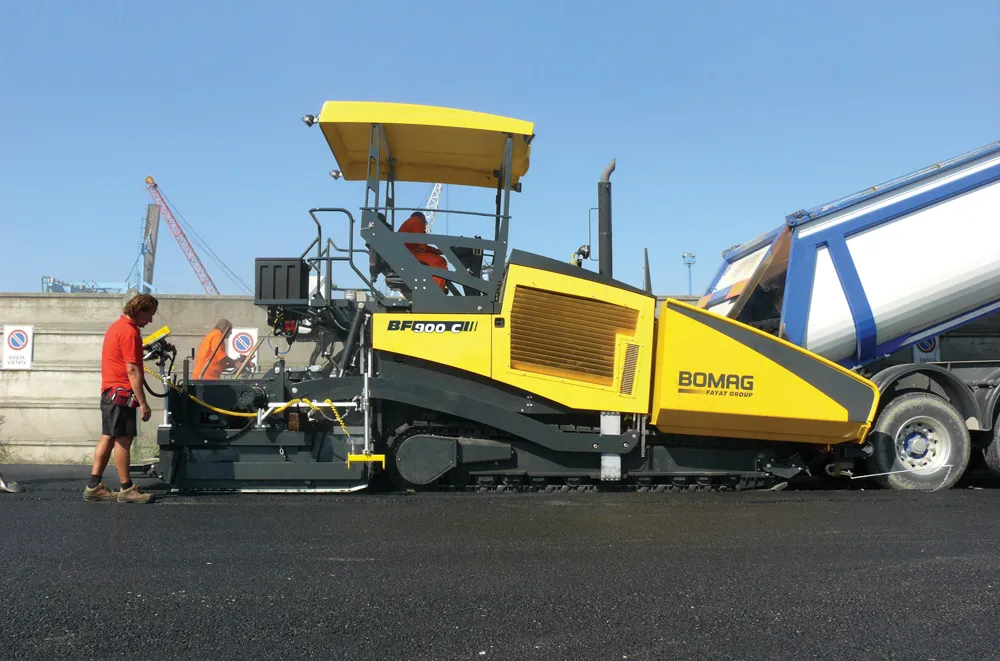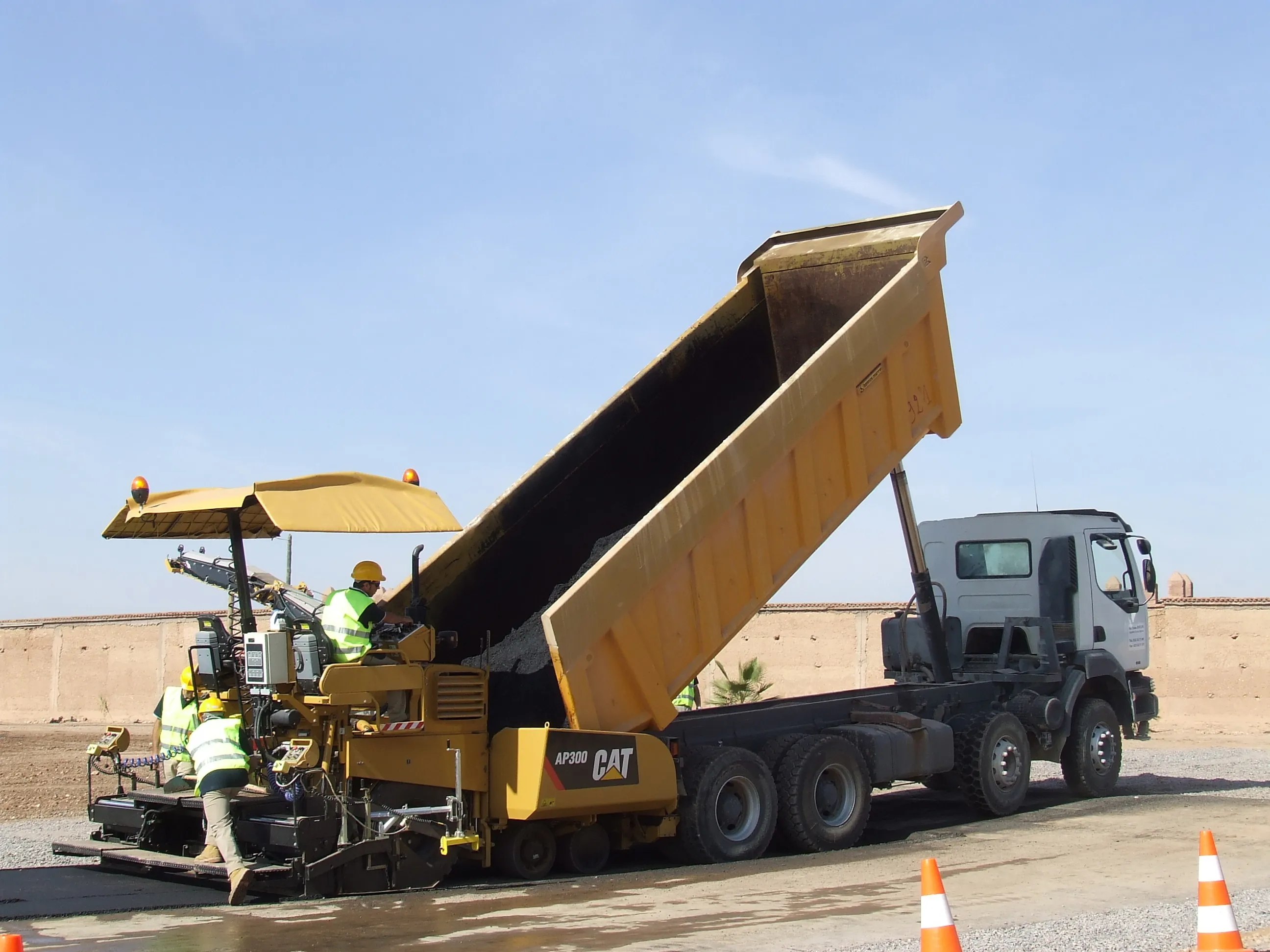Several major manufacturers are introducing new technology for the soil compaction market - Mike Woof writes
With the bauma 2016 exhibition drawing near, several major manufacturers are looking to expand their respective ranges of soil compactors, as well as to introduce innovative new technologies to the sector.
Ammann is offering new models in the shape of its ARS 200 and ARS 220, both of which are Tier 4 Final/Stage IV compliant. These 20tonne and 22tonne class machines feature newly designed cab
March 17, 2016
Read time: 5 mins

Several major manufacturers are introducing new technology for the soil compaction market - Mike Woof writes
With the688 bauma 2016 exhibition drawing near, several major manufacturers are looking to expand their respective ranges of soil compactors, as well as to introduce innovative new technologies to the sector.
6791 Ammann is offering new models in the shape of its ARS 200 and ARS 220, both of which are Tier 4 Final/Stage IV compliant. These 20tonne and 22tonne class machines feature newly designed cabs and improved controls, making them more comfortable to drive for a full working shift, providing better all-round visbility and ensuring that they are easier to operate. The machines are also available with the optional Ammann compaction expert (ACE) package, which ensures quality control, while also reducing wear and tear on the machine wear and lowering maintenance and general running costs. This range of compactors also benefits from the firm’s existing features including hydrostatic drive at the rear to maximise precision and ground clearance as well as the highly productive dual vibratory and amplitude systems.
Versatility is a key feature of the new161 Atlas Copco 206 Dynapac CA1400 soil compactor. Designed for compaction operations in pipe trenches, compacting roads, streets, parking lots and pipe trenches. Due to its compact size and manoeuvrability, the model is suited for compaction in cramped spaces in connection with refilling work. Other benefits include manoeuvrability even on steep slopes.
Both the D and PD versions are equipped with pads and drum drive, are suitable for the compaction of silt and clay-type soils. The PD version can be equipped with levelling blade and the D version with pad shell.
Compaction width is 1.676m while static linear load is 20kg/cm, allowing compaction of sand and gravel down to 500mm. Two amplitudes are offered of 1.7mm and 0.8mm. The PD version can compact silt and clay to a depth of 450mm.
Power for the machines comes from a1265 Kubota Stage IIIB/Tier4final engine delivering 55kW, with low exhaust emissions and fuel consumption. The engine is transversally mounted for ease of access.
172 BOMAG is now offering an improved single drum roller line-up, with weights ranging from 11-26tonnes. The 12tonne model is a new weight category for the firm also, sharing features with other machines in the range such as Tier 4 Final/Stage IV compliant diesels, low working noise and high output.
The compactors are also said to be easy to operate, with low maintenance needs and low fuel consumption. Sophisticated engine technology and smart power controls are said to help optimise working efficiency. The firm’s Ecomode function is said to lower fuel consumption by up to 30%, while ensuring the machines still provide the same compaction performance. Meanwhile the optional Ecostop function makes further fuel savings and also reduces engine wear.
The BW 213, 219 and 226 models are equipped with the firm’s Variocontrol (BVC) compaction system, with automatic compaction control. A new design is said to make this even easier to use of Variocontrol, with a single rotary switch integrated into the arm of the seat needed for all settings. In manual mode the operator chooses the amplitude, while in automatic mode the operator can specify EVIB values with the Variocontrol package taking over control of amplitude. The Variocontrol system automatically ensures that energy is optimised and that the work is fully under control. This prevents over-compaction and minimises the number of passes required, boosting productivity and quality. Twin pumps in the high gradeability DN versions makes the machines far more stable in operation on steep slopes and boosts gradeability to over 60%.
228 HAMM reports that its H series single drum compactors are proving highly successful, particularly the H5 and H7 models introduced last year. The firm is continuing to upgrade the range with the sophisticated driving system now being introduced to all of the Tier 4 Final/Stage IV compliant soil compactors weighing 7tonnes or more. This sophisticated drive system will also be fitted to the soil compactors for sale in less regulated markets in the future however.
The H5 and H7 variants are said to offer precise operation as well as good traction and ground clearance due to the hydrostatic drive system. The high traction means that these machines offer better climbing ability than earlier generation machines, while the H7 can also be operated with a dozer blade for smoothing surfaces out ahead of the compaction process. Meanwhile the sloping engine cover and short, compact design help provide good all round visibility. Versions of the H5 and H7 available include models with smooth and padfoot drums as well as the Vio variant with both drum oscillation and vibration.
A special variant of the larger H25i meanwhile is the VC, which is fitted with a modified drum. This can be equipped with standard padfoot plates or with picks, for use in rock breaking applications. The picks are similar to those used in road recycling applications and can be quickly changed for maintenance or if the user wants to change the configuration of the machine to a padfoot type.
269 LiuGong is now offering its upgraded 12tonne class 6612B soil compactor. This B-series machine benefits from an upgraded driveline and compaction system, boosting performance. Power comes from a Tier 3/Stage IIIA diesel delivering 104kW and the machine is aimed at customers in developing markets such as the Middle East and Africa. Performance is said to be improved over the previous generation while the machine also has an upgraded cab with better controls and all round visibility.
With the
Versatility is a key feature of the new
Both the D and PD versions are equipped with pads and drum drive, are suitable for the compaction of silt and clay-type soils. The PD version can be equipped with levelling blade and the D version with pad shell.
Compaction width is 1.676m while static linear load is 20kg/cm, allowing compaction of sand and gravel down to 500mm. Two amplitudes are offered of 1.7mm and 0.8mm. The PD version can compact silt and clay to a depth of 450mm.
Power for the machines comes from a
The compactors are also said to be easy to operate, with low maintenance needs and low fuel consumption. Sophisticated engine technology and smart power controls are said to help optimise working efficiency. The firm’s Ecomode function is said to lower fuel consumption by up to 30%, while ensuring the machines still provide the same compaction performance. Meanwhile the optional Ecostop function makes further fuel savings and also reduces engine wear.
The BW 213, 219 and 226 models are equipped with the firm’s Variocontrol (BVC) compaction system, with automatic compaction control. A new design is said to make this even easier to use of Variocontrol, with a single rotary switch integrated into the arm of the seat needed for all settings. In manual mode the operator chooses the amplitude, while in automatic mode the operator can specify EVIB values with the Variocontrol package taking over control of amplitude. The Variocontrol system automatically ensures that energy is optimised and that the work is fully under control. This prevents over-compaction and minimises the number of passes required, boosting productivity and quality. Twin pumps in the high gradeability DN versions makes the machines far more stable in operation on steep slopes and boosts gradeability to over 60%.
The H5 and H7 variants are said to offer precise operation as well as good traction and ground clearance due to the hydrostatic drive system. The high traction means that these machines offer better climbing ability than earlier generation machines, while the H7 can also be operated with a dozer blade for smoothing surfaces out ahead of the compaction process. Meanwhile the sloping engine cover and short, compact design help provide good all round visibility. Versions of the H5 and H7 available include models with smooth and padfoot drums as well as the Vio variant with both drum oscillation and vibration.
A special variant of the larger H25i meanwhile is the VC, which is fitted with a modified drum. This can be equipped with standard padfoot plates or with picks, for use in rock breaking applications. The picks are similar to those used in road recycling applications and can be quickly changed for maintenance or if the user wants to change the configuration of the machine to a padfoot type.








